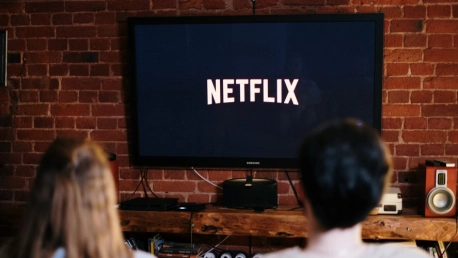Over the past few years, streaming services have completely changed the way people consume content, and really the entire entertainment industry as a whole. What started out as a slight change in viewing behavior quickly transformed into an entirely digitized and on-demand model, which has led to quite a disruption for traditional entertainment.
Most would say that this metamorphosis has been brought on by the convenience and comfort provided by streaming services. All of a sudden, watching 20 commercials during the course of a night and only getting one episode of your favorite series per week is a thing of the past. Now, you can binge-watch an entire season in one night if you feel like it. And ads? Those have been reduced to 10-second promos for the viewers not paying for a premium subscription.
It’s safe to say that these streaming services have quite literally altered the very fabric of entertainment as we know it. This revolution has a lot of moving parts, affecting everything from content production and distribution to viewer engagement and global cultural trends. This article will explore how streaming platforms like Netflix, Amazon Prime, and Disney+ have turned the entertainment industry on its head, creating a new digital ecosystem that is continuously evolving.
The Rise of Streaming Services
Remember when you and your family used to gather around the TV at a certain time for your favorite shows? Those days are long gone, and as convenient as streaming services may be these days, some would argue that it takes away from quality time spent with loved ones. However, the journey from traditional broadcast media to today’s streaming giants is nothing short of remarkable. So, let’s trace the roots of streaming services, from early ideas like Napster and YouTube to the industry giants like Netflix, which started as a DVD rental service before changing over to streaming in 2007.
It’s not even just about Netflix anymore. The streaming industry nowadays features a variety of heavy hitters, including Amazon Prime, with its vast e-commerce backing, and Disney+, which has leveraged its extensive library of classic content. Every platform mentioned has carved out a name for itself and secured its spot as the top choice in its niche.
Transforming Viewing Habits
What really set streaming services apart from their traditional counterpart was the on-demand model. And to top it all off, you have additional tech innovations also adding to an already appealing option, such as content delivery networks, adaptive bitrate streaming, as well as cloud-based content management systems. So whether it’s more efficient content distribution on a global scale, better video quality based on internet speed, or just a larger variety of content available, the odds of traditional entertainment staying on top is getting slimmer by the year.
Understanding Binge-Watching Culture
Be honest; all of us have sat through an entire season of a series that’s just too nail-biting to turn off. The truth is that binge-watching has become an everyday occurrence where it was never possible before, except if you rewatched something fairly old that already aired a while ago. This behavior is indulged by streaming services satisfying our need to stay immersed, entranced, and knowing how every story ends right now, instead of waiting weeks or sometimes even months. Streaming platforms cater to this by using complex algorithms to recommend a personalized content line-up, keeping viewers engaged for longer periods. This also impacts how series are written and produced, with many now designed to be consumed in long sessions, featuring intricate storylines and character developments that unfold across episodes.
The Art of Personalization in Streaming
Streaming platforms’ creation has been narrowed down to almost a science by now, carefully designed with data-driven decision-making at the core of it all. The fact is that every second you spend on there, your clicks, pauses, and searches are being carefully analyzed to curate series and movies that you’re most likely to be attracted to. This not only enhances the viewer’s experience by providing relevant content suggestions but also guides the production of new shows and movies. So by constantly refining their algorithms and gathering loads of data, streaming services actively shape viewer preferences and influence trends in the entertainment industry. Think about it — something that’s been around on Netflix for ages can be featured at the top of the site’s page tomorrow, and by the end of the day, you’re probably going to have a hit on your hands.
Impact on Traditional Media
We know by now that streaming services have completely altered the entertainment industry, which has led to a notable decrease in traditional media consumption. Cable TV subscriptions, which once were the cornerstone of home entertainment, have seen a steady decline and are riding a one-way train to rock bottom. This change can be attributed to the convenience and flexibility offered by streaming platforms. The ease of accessing a vast library of content online, without the need for physical storage, has largely rendered these formats obsolete for many consumers.
How Traditional Broadcasters’ are Responding
After all that’s been said and done, traditional media is not conceding defeat. In fact, many broadcasters are actively trying to adapt to this complete change in viewer behavior and facilitate these new needs their audience didn’t always have. Now, several networks have launched their own streaming platforms or formed partnerships with existing ones. For example, HBO with HBO Max and NBC with Peacock are just some traditional broadcasters entering the streaming space. This way, they’re still staying true to their roots and keeping their current audience engaged, but at the same time, filling the gaps caused by streaming services’ on-demand model.
Streaming Meets Traditional
You might be surprised to find out that there is a win-win situation in this seemingly endless tug-of-war between streaming platforms and traditional media outlets. Some traditional media companies are integrating streaming features into their offerings. Now, you can purchase a traditional cable package that also includes on-demand services, ensuring you get the best of both worlds without having to sell a kidney. So at night, you can get the latest news and watch live events, afterward flipping over to the binge side of things and enjoying hours of your favorite shows.
Global Reach and Localization
One of the most notable attributes of streaming platforms could be the fact that now, you’re no longer confined by your geographical location when sifting through movies and series to watch. The world of entertainment has been dramatically broadened by streaming services, effectively globalizing content accessibility. These platforms have dismantled geographical barriers, allowing viewers from different parts of the world to access a diverse range of movies and TV shows. For instance, a Netflix subscriber in the United States can effortlessly watch a Korean drama like “Squid Game” or a Spanish series like “Money Heist,” which was previously accessible only in their respective countries or through niche media channels.
Tailoring Content for Local Audiences
While worldwide content enjoys widespread popularity, streaming services are also placing significant emphasis on local content. Recognizing the unique cultural distinctions and preferences of different counties, continents, and regions, these platforms are investing in local productions. In this way, they don’t just cater to local tastes but also add to content around the world, offering people a glimpse into the cultures and stories of others. For example, Netflix has produced a range of Bollywood movies, capturing the essence of Indian cinema, while HBO has invested in Scandinavian crime thrillers, bringing the distinct flavor of Nordic noir to a global audience. This localized approach ensures that streaming services are not just content distributors for people from all around the world but also champions of regional storytelling.
The Bottom Line
At the end of the day, the only constant is change, and this can clearly be seen in the entertainment industry these last few years. From the rise of these digital giants reshaping viewer habits and challenging traditional media, to the technological innovations driving personalized, on-demand content, streaming services have redefined the boundaries of global entertainment.
We’ve seen how streaming is not just a new way to watch; it’s a new way to experience stories. It has democratized content, giving a voice to diverse narratives and bringing them to a global audience. It’s a tale of adaptability, with traditional media learning to coexist and compete in this brave new world.
Streaming services have also revolutionized not only what we watch, but how we watch it. They have transformed couches into cinemas and made the entire world a stage for stories. As we look towards the future, one thing is clear: the story of streaming and its impact on global entertainment is just getting started, and its next chapters are as promising as they are unpredictable.









